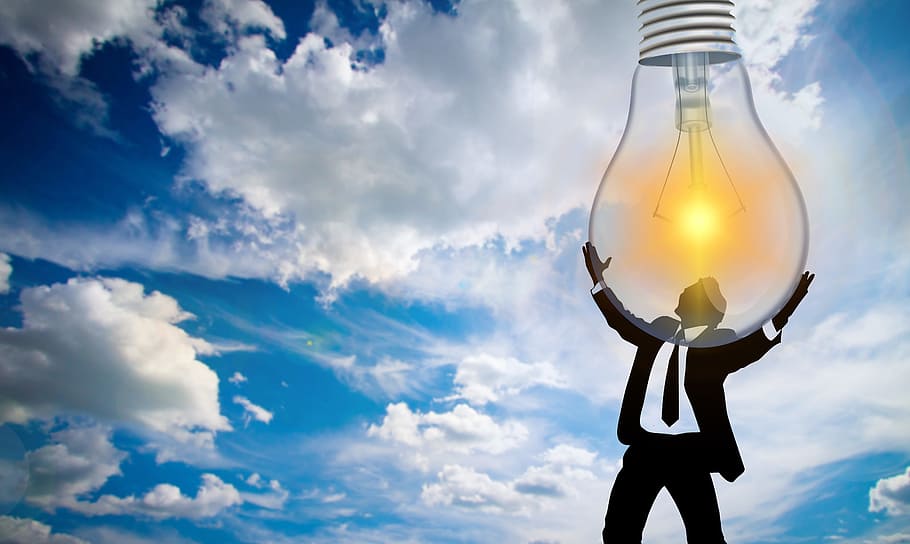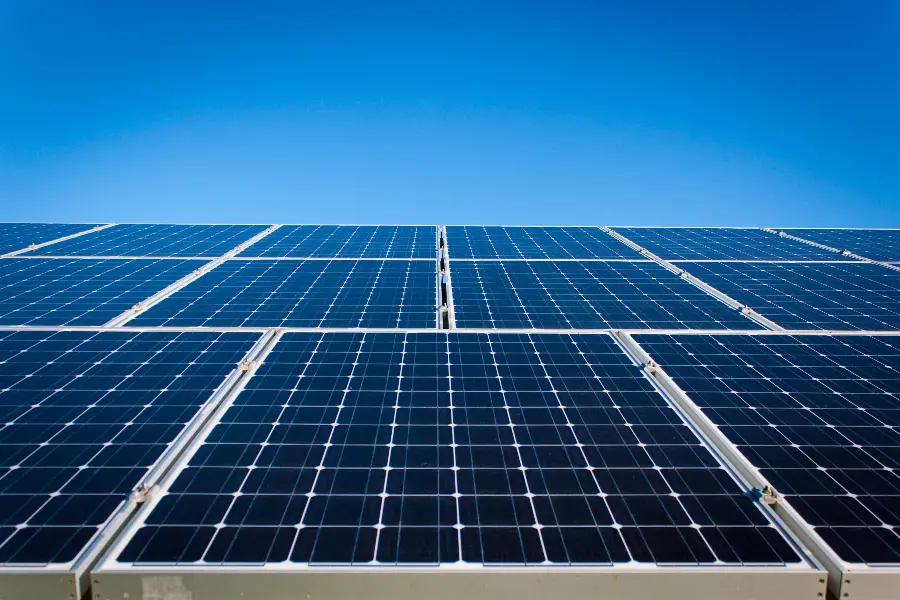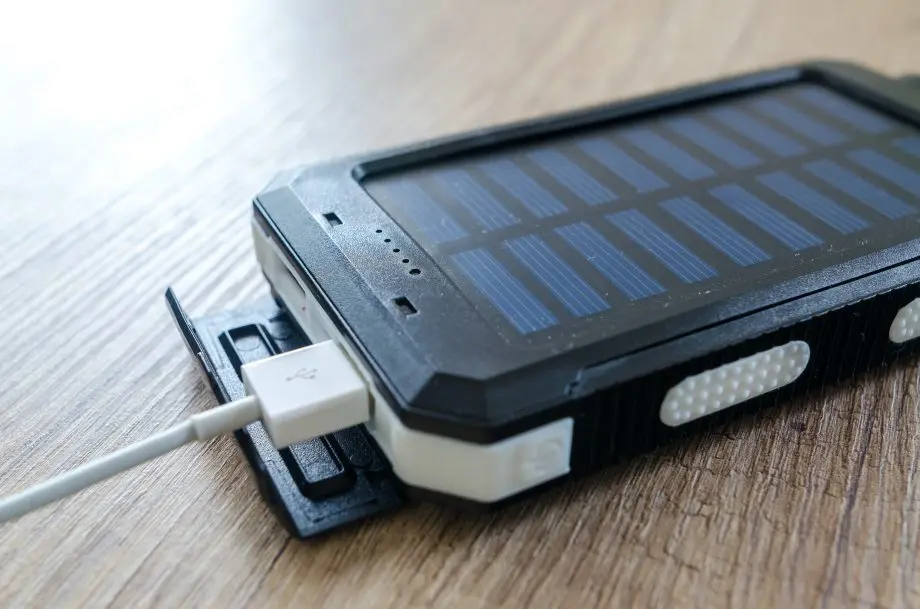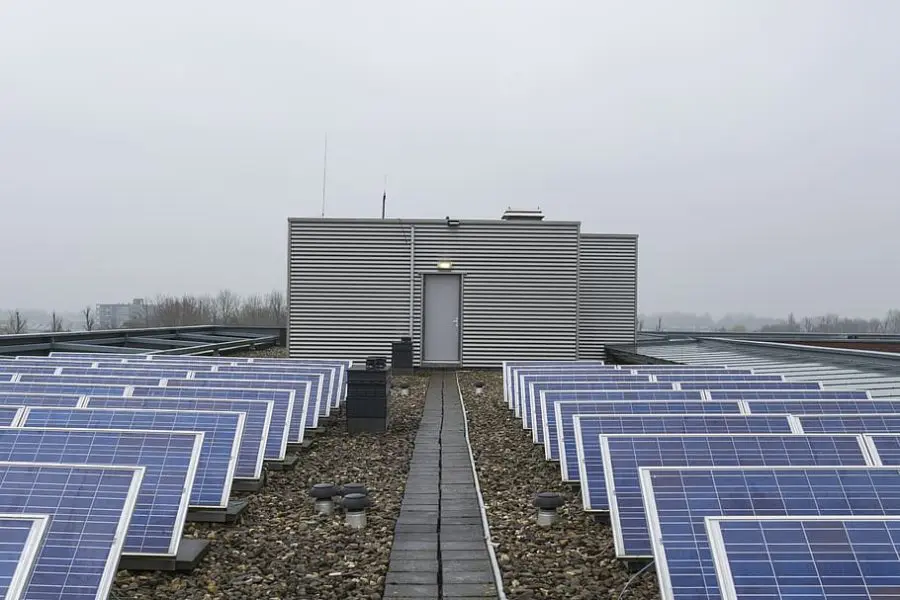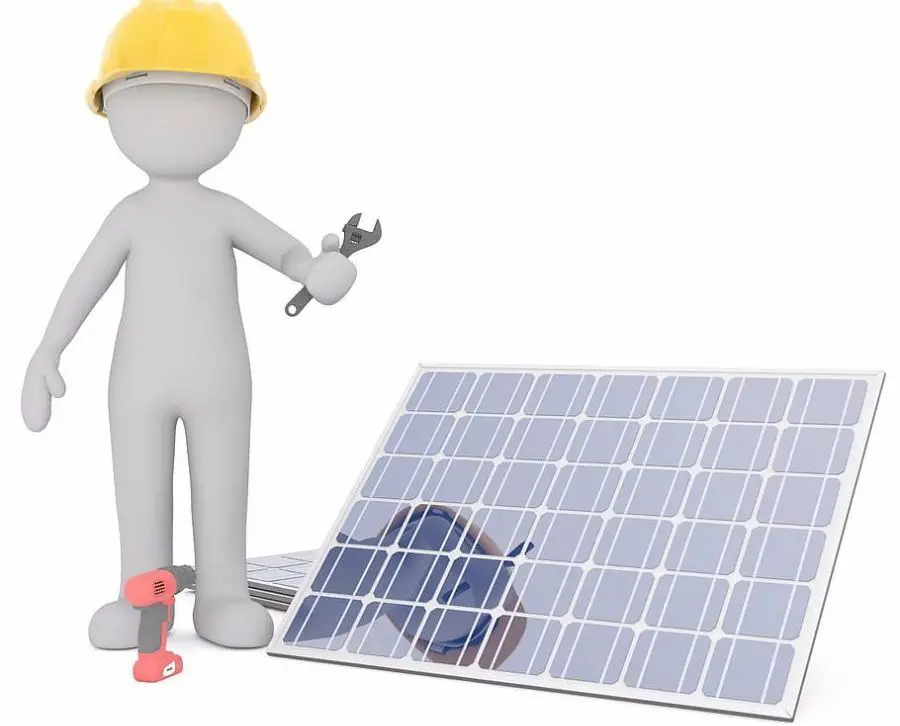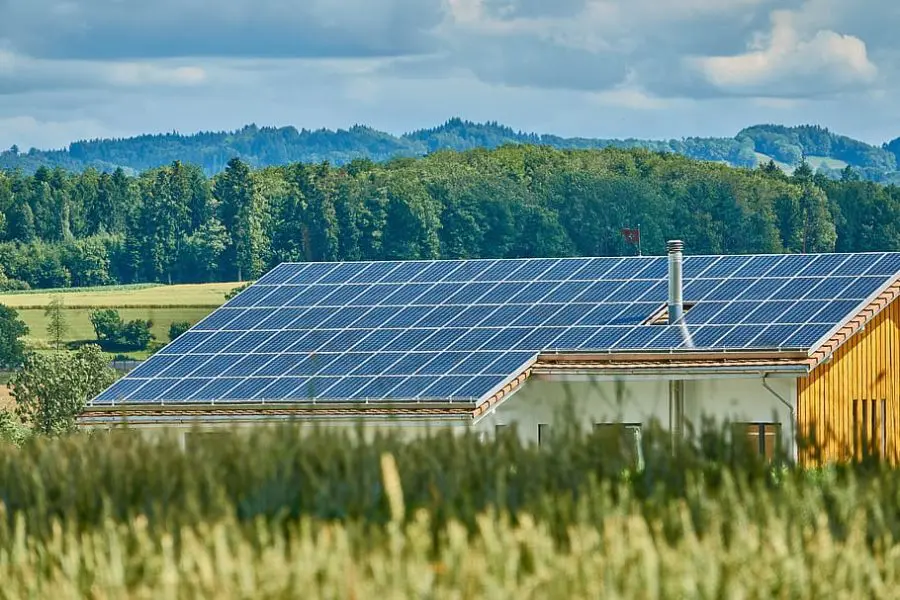
Discover solar power solutions for off-grid living! Learn how to harness the sun’s energy for your home, enjoy energy independence, and reduce your carbon footprint.
Have you ever dreamed of escaping the hustle and bustle, disconnecting from the grid, and living a life powered by the sun?
Well, you’re not alone. More and more people are exploring solar power solutions for off-grid living.
It’s about harnessing the abundant energy of the sun, enjoying the freedom of energy independence from electric grid-tied systems, and making a positive impact on our planet.
So, let’s dive into this exciting world and discover how you can turn this dream into a reality!
Solar Power Solutions for Off-Grid Living
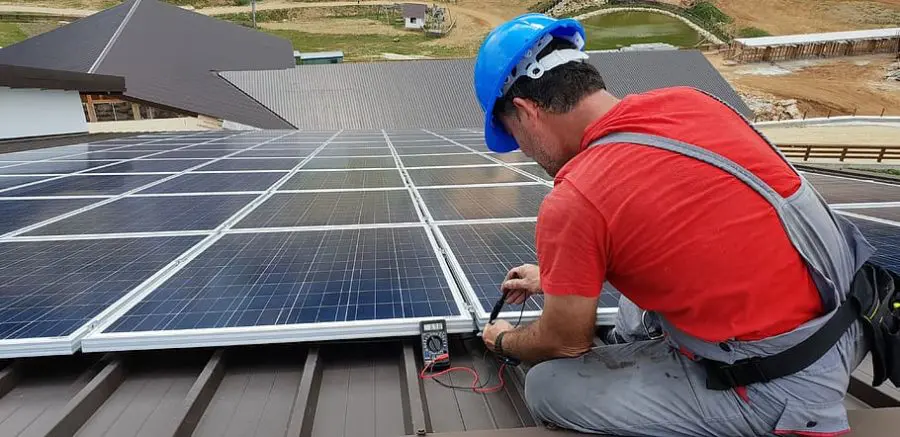
Welcome to the world of self-sufficiency, where the power of the sun fuels your daily life.
In this journey through solar power solutions for off-grid living, we’ll explore everything from the basics of solar energy to the nuts and bolts of setting up your own off-grid power system.
We’ll delve into the components that make up a solar power system, discuss how to maintain it to avoid power outages, and even touch on the costs and financing options.
We’ll also share some real-life case studies and answer the most frequently asked questions.
So, whether you’re a seasoned off-gridder or just starting to consider this lifestyle, this post has something for you. Let’s get started!
Definition of Off-Grid Living
Off-grid living, as the name suggests, is all about living independently of the traditional public utility electrical grid.
It’s about creating your own self-sufficient oasis, where you generate and manage your own electricity, water, and sometimes even food.
It’s a lifestyle choice that’s gaining popularity, not just among those seeking a more sustainable way of life, but also among those who value self-reliance, privacy, and the freedom to live according to their own rules.
Importance of Solar Power in Off-Grid Living
Now, you might be wondering, Why solar power? Why not wind or hydro?
Well, solar power is often the go-to choice for off-grid living for several reasons.
First, it’s a renewable energy source that’s available almost everywhere.
No matter where your off-grid adventure takes you, chances are, you’ll have access to sunlight.
Second, solar power systems have become more affordable and efficient over the years, making them a practical choice for many.
Plus, they’re scalable. You can start with a small solar system and expand it as your energy needs grow.
But perhaps the most compelling reason is the environmental impact, or rather, the lack thereof.
Solar power is clean, and green, and helps reduce your carbon footprint.
By choosing solar power solutions for off-grid living, you’re not just gaining energy independence; you’re also contributing to a healthier planet. And that’s a win-win in our book!
Understanding Solar Power
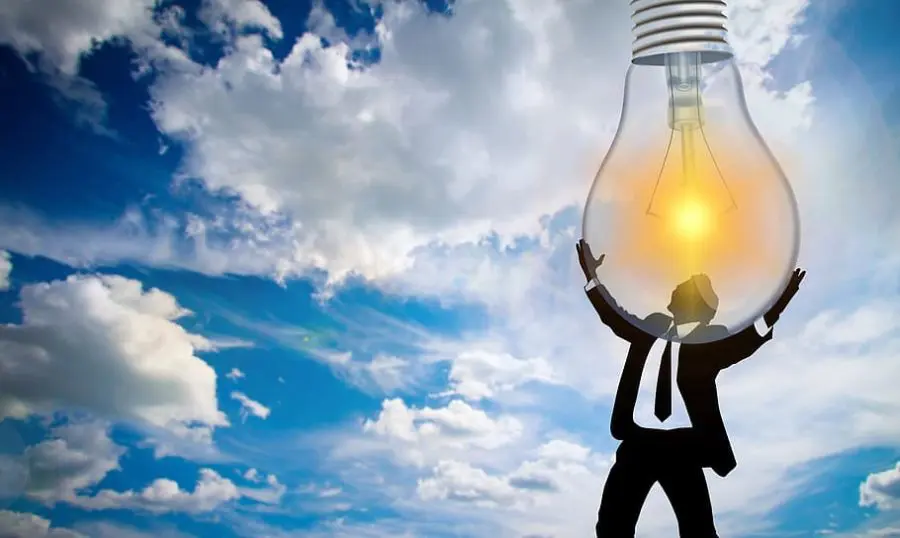
Let’s take a moment to appreciate the sun, our very own star that’s been powering life on Earth for billions of years.
It’s not just about the warmth and light it provides, but also the clean, renewable energy we can harness for our homes.
In this section, we’re going to delve into the world of solar power. We’ll explore how it works, why it’s such a game-changer for off-grid living and the benefits it brings to our lives and our planet.
So, grab a cup of coffee, sit back, and let’s unravel the mysteries of solar power together!
How Solar Power Works
Solar power, in its simplest form, is all about converting sunlight into electricity. But how does this magical transformation happen, you ask?
Well, it all starts with solar panels. These photovoltaic panels are made up of photovoltaic cells (that’s a fancy term for light electricity).
When sunlight hits these cells, it knocks electrons loose from their atoms. As these electrons flow through the cell, they generate electricity.
This electricity is in the form of direct current (DC), which is then converted into alternating current (AC) by an inverter.
AC is the type of electricity that powers most of our home appliances. And voila! The sunlight that was shining on your solar panels is now powering your home.
Benefits of Solar Power
Now, let’s talk about the benefits of solar power. First and foremost, it’s a renewable energy source.
Unlike fossil fuels, we won’t run out of sunlight anytime soon. This makes solar power a sustainable choice for our energy needs.
Second, solar power can significantly reduce or even eliminate your electricity bills.
Once you’ve covered the initial costs of setting up your solar power system, the electricity it generates is essentially free.
Plus, any excess electricity you generate can often be sold back to the grid, earning you money.
Third, solar power systems are low maintenance. Apart from occasional cleaning and routine checks, they don’t require much upkeep.
This makes them a practical and hassle-free solution for off-grid living.
And last but not least, solar power is good for our planet. It doesn’t emit harmful greenhouse gases or contribute to global warming.
By choosing solar power, you’re not just powering your home; you’re also doing your part in preserving our environment.
And that’s something to feel good about!
Components of an Off-Grid Solar Power System
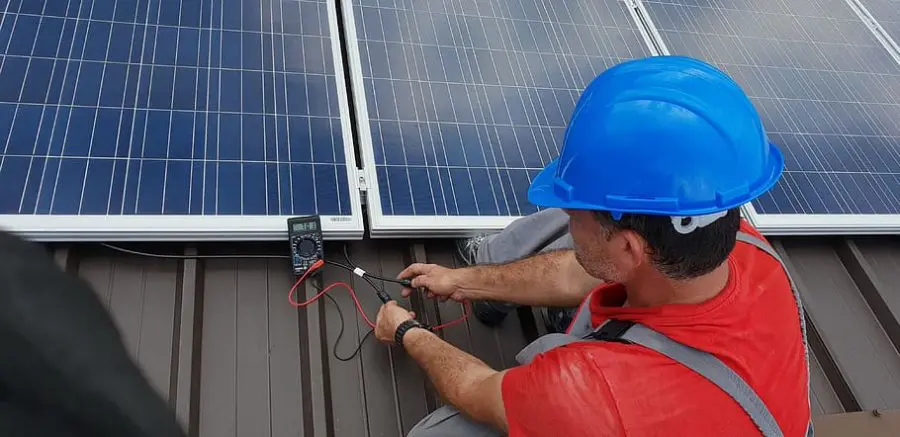
Ready to dive a little deeper into the world of solar power?
Let’s talk about the key components that make up an off-grid solar power system.
Think of it as a team, where each player has a specific role to play.
From the solar panels that capture the sun’s energy to the batteries that store it for later use, each component is crucial to the system’s overall performance.
In this section, we’ll introduce you to these key players, explain their roles, and help you understand how they work together to keep your off-grid home powered up. So, let’s get started!
Solar Panels
Solar panels are the stars of the show in any solar power system. These are the devices that capture the sun’s energy and start the process of turning it into electricity.
They’re made up of many smaller units called photovoltaic cells (remember those from earlier?), which generate electricity when exposed to sunlight.
The number of solar panels you’ll need depends on your energy consumption and the amount of sunlight your location receives.
But remember quality matters as much as quantity. High-efficiency solar panels can generate more electricity from the same amount of sunlight.
Solar Inverters
Next up, we have the solar inverters. These are like the translators of your solar power system.
You see, the electricity generated by solar panels is in the form of direct current (DC), but most of our home appliances use alternating current (AC).
That’s where the inverter comes in. It converts the DC electricity from your solar panels into AC electricity that can power your home.
Solar Batteries
Then we have the solar batteries, the storage units of your solar power system.
They store the excess electricity generated by your solar panels for use when the panels aren’t generating electricity, like at night or during cloudy days.
The capacity of your solar batteries plays a crucial role in determining how long your system can power your home without sunlight.
Lead-acid Batteries vs Lithium Batteries for Off-grid Living
When it comes to choosing batteries for off-grid living, the two most common options are lead-acid and lithium batteries, each with its own strengths and weaknesses.
Lead-acid batteries, which include both flooded and sealed versions, have been around for a long time and are often less expensive upfront.
They’re known for their reliability and are widely available. However, they typically have a shorter lifespan than lithium batteries and require regular maintenance, such as topping up the water in flooded versions and ensuring they’re not overcharged.
On the other hand, lithium batteries, specifically lithium-ion, are a newer technology that’s quickly gaining popularity for off-grid applications.
They’re more efficient than lead-acid batteries, meaning they can deliver more of their stored energy before needing to be recharged.
They also have a longer lifespan, often lasting twice as long or more compared to lead-acid batteries.
Plus, they require virtually no maintenance. The downside? They’re typically more expensive upfront, but this cost can often be offset by their longer lifespan and higher efficiency.
In the end, the choice between lead-acid and lithium batteries for off-grid living will depend on your specific needs, budget, and preference.
It’s always a good idea to consult with a solar power professional to help make the best choice for your situation.
Charge Controllers
Last but not least, we have solar charge controllers. These are the protectors of your solar power system.
They regulate the voltage and current coming from your solar panels to your batteries.
This prevents the batteries from overcharging, which can significantly shorten their lifespan.
In other words, charge controllers ensure your solar power system operates efficiently and safely.
So there you have it, the key components of an off-grid solar power system.
Each plays a crucial role in harnessing, converting, storing, and managing a solar energy system, enabling you to enjoy a reliable and sustainable power supply in your off-grid home.
Setting Up an Off-Grid Solar Power System
Setting up an off-grid solar power system might seem like a daunting task. But don’t worry, we’re here to guide you through it.
It’s all about understanding your energy needs, choosing the right equipment, and planning the installation process.
And while it might involve some technical aspects, remember that you’re not alone in this journey.
There are plenty of resources and professionals ready to help. In this section, we’ll walk you through the key steps of setting up your off-grid solar power system. So, let’s roll up our sleeves and get started!
Evaluating Energy Needs
The first step in setting up an off-grid solar power system is understanding your energy needs.
This involves taking a close look at your current electricity usage. How much power do your appliances consume?
How much does your usage vary throughout the day or across different seasons? You can find this information on your electricity bills or by using energy monitoring tools.
Remember, the goal is to size your solar power system to meet your energy needs without overinvesting in unnecessary capacity.
Choosing the Right Solar Equipment
Once you have a clear understanding of your energy needs, the next step is choosing the right solar equipment.
This includes selecting the right type and number of solar panels, the right size of the inverter, and the right capacity of batteries.
You’ll also need a suitable charge controller to manage the flow of electricity in your system.
When choosing your equipment, consider factors like quality, efficiency, cost, and the reputation of the manufacturer.
It’s also a good idea to consult with a solar power professional to ensure you’re making the best choices for your specific situation.
Installation Process
With your energy needs evaluated and your equipment chosen, it’s time to move on to the installation process.
This involves mounting your solar panels in a location where they’ll receive maximum sunlight, installing your inverter and batteries, and setting up your charge controller.
The installation process can be complex and requires a good understanding of electrical systems, so it’s often best to hire a professional.
Once everything is set up, you’ll need to test your system to ensure everything is working correctly.
And with that, congratulations! You’re now the proud owner of an off-grid solar power system.
Maintenance of an Off-Grid Solar Power System

Congratulations on setting up your off-grid solar power system! Now, let’s talk about keeping it in top shape.
Just like a car or a house, your solar power system needs regular maintenance to perform at its best.
But don’t worry, it’s not as complicated as it might sound. In fact, solar power systems are known for their low maintenance needs.
In this section, we’ll cover the basics of maintaining your solar power system, from regular cleaning to periodic inspections and battery care.
So, let’s ensure your solar power system continues to serve you well for years to come!
Regular Cleaning
Solar panels are pretty low maintenance, but they do like to be kept clean.
Dust, bird droppings, leaves, and other debris can accumulate on the surface of your panels and block sunlight, reducing their efficiency.
So, it’s a good idea to clean your panels regularly. How often you need to clean them will depend on your local environment.
In a dusty area or a place with a lot of birds, you might need to clean them more frequently.
Usually, a gentle rinse with a garden hose is enough. But for more stubborn dirt, you might need to use a soft brush or a special solar panel cleaning kit.
Periodic Inspection
In addition to regular cleaning, it’s also important to inspect your solar power system periodically.
This involves checking the physical condition of your panels for any damage, ensuring the mounting system is secure, and checking the wiring and connections for any signs of wear or corrosion.
You should also monitor your system’s energy output to make sure it’s performing as expected.
If you notice any issues during your inspection, it’s best to call in a professional to take a closer look.
Battery Care
Taking care of your solar batteries is crucial for the longevity and efficiency of your off-grid solar power system.
This involves keeping them at the right temperature, as extreme cold or heat can affect their performance and lifespan.
You should also avoid overcharging or deeply discharging your batteries, as this can cause damage over time.
Most charge controllers will help manage this, but it’s still something to keep an eye on.
Finally, different types of batteries require different maintenance, so make sure to follow the manufacturer’s instructions for your specific batteries.
By following these maintenance tips, you can ensure your solar power system continues to provide reliable, efficient energy for your off-grid living.
Cost and Financing of an Off-Grid Solar Power System
Let’s talk about the elephant in the room namely the cost of setting up an off-grid solar power system.
It’s no secret that the initial investment can be significant. But before you get discouraged, remember that solar power is an investment that pays for itself over time.
Plus, there are various financing options available to make it more affordable.
In this section, we’ll break down the costs associated with an off-grid solar power system and explore some of the financing options.
So, let’s dive in and demystify the financial side of going solar!
Initial Investment
The initial investment for an off-grid solar power system can vary widely depending on the size of the system, the type of equipment you choose, and the cost of installation.
On average, you can expect to pay anywhere from $20,000 to $100,000 for a complete system.
This includes the cost of solar panels, inverters, batteries, charge controllers, and installation.
While this might seem like a hefty sum, it’s important to remember that this is a long-term investment that can provide you with free electricity for many years.
Potential Savings
Now, let’s talk about the potential savings. Once your solar power system is up and running, it can significantly reduce or even eliminate your electricity bills.
Plus, any excess electricity you generate can often be sold back to the grid, earning you money.
Over time, these savings can add up and offset the initial cost of your system.
Additionally, solar power systems require minimal maintenance, which can also save you money in the long run.
And let’s not forget the environmental savings. By reducing your reliance on fossil fuels, you’re helping to reduce greenhouse gas emissions and combat climate change.
Financing Options
If the initial cost of an off-grid solar power system seems daunting, don’t worry.
There are various financing options available to help make solar power more affordable.
These include solar loans, power purchase agreements (PPAs), and solar leases.
Some companies also offer rent-to-own programs. Additionally, there are various federal, state, and local incentives and rebates available for solar power systems.
These can significantly reduce the cost of your system, making solar power a more affordable option.
It’s worth taking the time to research these options and find the best one for your situation.
Remember, going solar is not just about the cost. It’s about investing in a sustainable future, achieving energy independence, and making a positive impact on our planet.
And in many cases, the financial benefits are just as bright as the environmental ones!
Case Studies of Solar Panel Systems for Off Grid Living
Sometimes, the best way to understand something is to see it in action.
That’s why we’re going to take a look at some real-life examples of off-grid solar power systems.
These case studies will give you a glimpse into the experiences of people who have made the switch to solar power, showcasing the challenges they faced, the solutions they found, and the benefits they’re enjoying.
Whether it’s a remote cabin in the woods or a commercial setup in a rural area, these stories will bring the concept of off-grid solar power to life.
So, let’s dive in and see what solar power solutions for off-grid living look like in the real world!
Residential Case Study
Let’s start with a residential case study. Meet John and Jane Doe, a couple who decided to build their dream cabin in the remote woods of Montana.
They wanted to live sustainably and independently, so they opted for an off-grid solar power system.
After evaluating their energy needs, they installed a system with enough solar panels to generate the required electricity and a battery bank to store it.
They also included a backup generator for those cloudy days when solar production might be low.
The initial investment was significant, but they were able to offset some of the cost with federal and state solar incentives.
Now, they enjoy a reliable power supply without monthly electricity bills.
Plus, they love the peace of mind knowing they’re reducing their carbon footprint and living in harmony with nature.
Commercial Case Study
Now, let’s look at a commercial case study. Consider Green Acres, a small organic farm located in a rural area of California.
The farm was too far from the nearest power lines to connect to the grid affordably, so they decided to go solar.
They installed a large solar power system to handle their energy needs, which included powering their farm equipment, irrigation system, and on-site facilities.
They also invested in a robust battery storage system to ensure they had power even when the sun wasn’t shining.
The result? Green Acres is now a fully self-sufficient farm, running entirely on clean, renewable energy.
They’ve significantly reduced their operating costs and even sell their excess solar power back to the grid.
Plus, they’ve become a shining example of sustainable farming in their community.
These case studies show that whether it’s for a home or a business, in the city or the countryside, solar power solutions for off-grid living are not just feasible but also financially and environmentally rewarding.
Solar Power Solutions for Off-Grid Living FAQs
Still have questions about solar power solutions for off-grid living? You’re not alone.
It’s a big topic, and it’s natural to have queries. That’s why we’ve compiled a list of the most frequently asked questions about off-grid solar power.
From understanding how much solar power you need to exploring alternatives, we’ve got you covered.
So, let’s dive into these FAQs and shed some light on the common curiosities about off-grid solar power!
Q: How do you get power when living off the grid?
A: When living off-grid, you generate your own power, typically through renewable energy sources.
The most common method is using solar panels to capture sunlight and convert it into electricity.
This electricity is stored in batteries for use when the sun isn’t shining.
Some off-grid systems also include a backup generator or alternative energy sources like wind or hydropower for additional reliability.
Q: How much solar do I need for off-grid living?
A: The amount of solar power you need for off-grid living depends on your energy consumption.
This includes the power used by all your appliances, lighting, heating and cooling systems, and any other electrical devices.
A solar professional can help you calculate your energy needs and design a solar power system that can meet them.
Q: Can you live completely off-grid with solar panels?
A: Yes, it’s absolutely possible to live completely off-grid with solar panels.
With a properly designed and maintained solar power system, you can generate and store enough electricity to power your home around the clock.
However, it’s important to note that living completely off-grid requires careful energy management and may involve lifestyle adjustments.
Q: What are off-grid alternatives to solar?
A: While solar power is a popular choice for off-grid living, it’s not the only option.
Other renewable energy power sources can also be used, either as alternatives or to complement a solar power system.
These include wind power, which uses wind turbines to generate electricity, and hydropower, which generates electricity from running or falling water.
The suitability of these alternatives depends on the natural resources available at your location.
Solar Power Solutions for Off-Grid Living Conclusion
As we reach the end of our journey exploring solar power solutions for off-grid living, it’s time to reflect on what we’ve learned.
We’ve delved into the workings of solar power, the components of an off-grid system, and the costs involved, and even looked at real-life case studies.
But most importantly, we’ve seen how solar power can offer a sustainable, reliable, and cost-effective solution for living off-grid.
In this concluding section, we’ll recap the key points and hopefully inspire you to consider solar power as a viable option for your off-grid adventure.
So, let’s wrap things up and look to a future powered by the sun!
Recap of Key Points
We’ve covered a lot of ground in this article, so let’s quickly recap the key points.
We started by understanding what off-grid living means and the role solar power plays in it.
We then delved into the workings of solar power and the benefits it offers.
We explored the components of an off-grid solar power system, including solar panels, inverters, batteries, and charge controllers.
We also discussed the process of setting up an off-grid solar power system, from evaluating your energy needs to choosing the right equipment and the installation process.
We touched upon the maintenance aspects of a solar power system and broke down the costs involved in setting up and running such a system.
We also looked at real-life case studies of both residential and commercial off-grid solar power systems.
Finally, we addressed some frequently asked questions about off-grid solar power, providing answers to common queries and concerns.
Encouragement for Transition to Solar Power
As we conclude, we want to encourage you to consider making the transition to solar power.
Yes, it requires an initial investment and some planning, but the benefits are immense.
From achieving energy independence to reducing your carbon footprint and saving on electricity bills, the advantages of solar power are hard to ignore.
Remember, every journey begins with a single step. And the journey to off-grid living with solar power is no different.
Start by understanding your energy needs, do your research, consult with professionals, and take that first step.
The path to a sustainable, off-grid lifestyle is within your reach. And trust us, the view from there is pretty spectacular!





